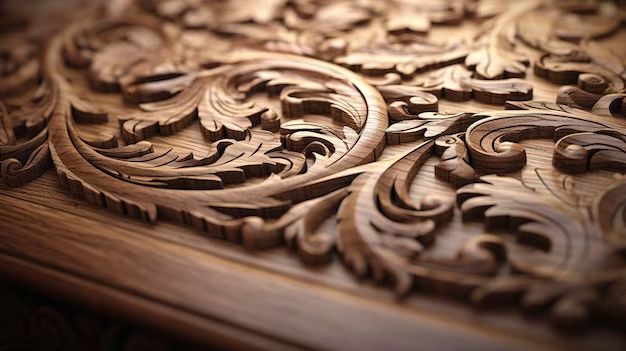Wood carving is a fun and rewarding hobby that can be enjoyed by beginners and experts alike. When starting out, it’s best to begin with simple projects using soft wood varieties like basswood or pine. Choosing an easy design and having the proper carving tools and safety equipment will help ensure success.
Page Contents
What are some good wood types to carve for beginners?
The best woods for beginner carvers are basswood, pine, aspen, and poplar. These woods have a straight, even grain and are relatively soft and easy to work with. Harder woods like oak, maple, and walnut are more difficult to carve and should be avoided until you gain more experience.
Basswood
Basswood is the quintessential wood for beginner carvers. It’s very soft and easy to cut but still holds detail well. Basswood carves smoothly and doesn’t tear out easily. It’s inexpensive and widely available at craft stores.
Pine
Pine is another soft, straight-grained wood that makes a good starter carving material. Different pine varieties work well including sugar pine, white pine, and ponderosa pine. Pine is also affordable and easy to find.
Aspen
Aspen is a hardwood but has a very soft texture that lends itself to carving. It has minimal grain patterns which allows the wood to hold fine details well. Aspen carves smoothly and doesn’t easily splinter.
Poplar
Poplar is another inexpensive hardwood choice ideal for beginners learning wood carving fundamentals. It’s soft with minimal grain, carves smoothly, and is readily available at lumber yards.
What are some beginner wood carving project ideas?
Great wood carving projects for beginners include:
Relief Carving
Relief carving involves carving a design into a wood plank’s surface. This is easier than full sculpture carving. Beginners can try simple designs like leaves, acorns, flowers, trees, animals, suns, moons, stars, etc.
Chip Carving
Chip carving is decorating wood by making small carved-out chips. This style is easy to learn and requires just a knife. Simple patterns like lines, triangles, curves, dots, and shapes work well.
Spoons and Forks
Carving eating utensils like spoons and forks from wood is an age-old tradition. It’s satisfying to carve a useful item. Rough out the shape with a band saw or coping saw and then refine with carving knives.
Walking Sticks
A hand-carved walking stick makes a great project. Debark and shape a stick with drawknives and knives. Add decorative details by carving patterns or figures into the wood.
Birdhouses
Mini birdhouses can be excellent beginner carving projects. They allow practicing measuring, assembly, shaping, and detailing skills. Use basic hand tools and include some relief carved or painted decoration.
What tools do you need for beginner wood carving?
Having a quality set of basic hand wood carving tools is essential for success. Recommended tools for beginners include:
| Carving Knives | For shaping, detailing, and whittling |
| Chisels | For removing larger waste areas |
| Gouges | For scooping and hollowing concave areas |
| Mallets | For striking chisels and gouges safely |
| Sharpening stones | For maintaining sharp blade edges |
| Strops | For final honing and polishing |
| Safety gloves | For protecting hands from cuts |
Take time to learn how to correctly sharpen and strop your tools. Sharp tools are crucial for safety and high-quality results.
What safety tips are important for beginners?
Practicing good safety habits is vital for wood carving. Important beginner tips include:
- Always carve away from your body and hands
- Secure workpiece using clamps or vise to prevent movement
- Keep knives and tools sharp so they don’t bind up in wood
- Don’t rush cuts or carve when tired
- Wear safety gloves and thumb guards
- Keep bandages handy
- Learn proper tool holding techniques
- Take breaks to avoid fatigue
- Keep work area clean and well lit
How should beginners get started learning techniques?
To start out strong, beginners should:
- Read books and watch online videos to learn basic methods
- Take an in-person carving class if possible
- Join a local wood carving club to learn alongside experienced carvers
- Start with simple practice projects to build fundamental skills
- Practice knife grips and basic push and pull slicing cuts
- Work slowly and carefully until techniques feel comfortable
- Be patient with yourself as wood carving takes time to master
Conclusion
With proper preparation and a passion for creating, beginners can successfully get started in wood carving. Choose an easy starter project in a soft wood like basswood, equip yourself with fundamental carving tools, and make sure to prioritize safety. Build your skills on simple practice pieces before moving to more complex carvings. With patience and persistence, a beginner can gain expertise and enjoy wood carving for a lifetime.
